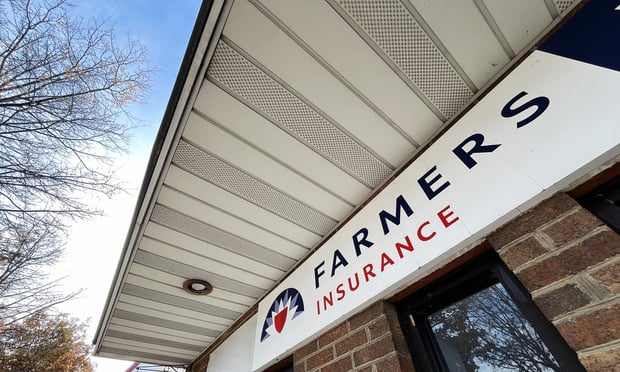Start with an already competitive environmental marketplace.
Next, mix in increased claim activity in certain areas and a significant carrier exit from the U.S./Canada site pollution/ pollution legal liability market; throw in some high-profile news events like the Flint, Mich., water crisis and a steady stream of pipeline leaks; and top it off with an incoming president who spoke during the campaign of gutting the Environmental Protection Agency, and you have what was an … active 2016, to put it mildly.
Or, as Willis Towers Watson states in its “Marketplace Realities 2017” report, “Be ready to navigate the most dynamic conditions (market exits/entries, personnel changes, emerging exposures, appetite shifts) ever experienced in the environmental insurance market.”
|AIG exit from mono-line PLL market
In the site pollution, or pollution legal liability (PLL) marketplace, the big story in 2016 was AIG's February announcement that it was exiting the mono-line PLL market in the U.S. and Canada. Yet the bigger story might be what happened afterward: As Joe Constantine, senior vice president and casualty broker at AmWINS Brokerage in Seattle, states in AmWINS' latest “State of the Market” report, “When AIG pulled out of the market, it had absolutely no hardening impact.”
Other experts likewise note that the expected hardening after a major market exit did not occur in PLL. Willis Towers Watson's Environmental Practice Leader/Head of Environmental Broking Richard Sheldon says he thought a market force such as AIG leaving might make other companies at least pause to re-examine their own books and take a deeper dive into their data to see if rates were adequate.
That hasn't happened, he says, other than for tougher risks. If anything, competition for simpler risks has become even more aggressive, Sheldon adds.
|'Feeding frenzy around simpler risks'
It's a sentiment echoed by Marsh Environmental Practice Leader Chris Smy, who says there has been “almost a feeding frenzy around simpler risks” non-renewed by AIG.
Rather than harden the market, then, the exit of a major player demonstrated how crowded PLL has become, with many other markets — including both new entrants and longtime players — eagerly jumping in to fill the void. In the AmWINS report, Evy Hazenberg, vice president and casualty broker at AmWINS Brokerage in Grand Rapids, Mich., says, “After the announcement, we immediately began getting calls from insurers offering to roll our AIG book.”

Abundance of capacity
That abundance of capacity was a key factor in AIG's decision to withdraw from PLL in the U.S. and Canada. As AIG Executive Vice President and CEO of Commercial Robert Schimek told NU Editor-in-Chief Shawn Moynihan in May, “My view on pollution legal liability is we helped create this market. We are one of the pioneers in this market and we think we do it better than almost anyone in the business. However, it's become a crowded field, and we believe that in general, our value proposition was not as valued by the marketplace as we think it should have been.”
That “crowded field” is now happily picking up accounts in search of new carriers. That's not to say all of the accounts are easy to pick up, however. Smy points out a challenge that's arisen with risks he calls “institutionalized accounts.” He explains these are accounts that have been with AIG for so long that the underwriting information necessary for a new carrier to get comfortable with the risk is difficult for the client to access — if it exists at all.
Marcel Ricciardelli, senior vice president, Environmental Division at Allied World, says of these accounts, “If you can't get the data, terms and conditions are going to change.” Good brokers, he explains, are building terms and conditions that are fair given the available underwriting information, and are bridging the knowledge gap by putting in the work and getting to know these clients, their businesses and the risks they face.
John Wasilchuk, vice president, environmental practice at Lockton, says in addition to working with the client to obtain any data on these accounts, brokers potentially have to have conversations with the clients to let them know that, due to the lack of data, new carriers' approach to the risk may be a different experience than in the past.
Additionally, as Smy and Sheldon note, while competition is fierce for simpler AIG PLL accounts, there is limited appetite for the more complex risks. This, of course, is not unique to competition over accounts coming from AIG. In fact, the market's reaction to AIG is essentially a microcosm of the Environmental marketplace as a whole: generally competitive, with increasing competition on basic risks and limited capacity for more complex risks, or risks with certain characteristics.
As Smy says, “There's still a lot of capacity, relatively speaking. But that theoretical capacity is often not deployed on some of the more challenging risks, or in certain industries, or on risks with catastrophic exposure.”
Sheldon cites mining and oil & gas as sectors in which appetite is shrinking, and he says this impacts not only the ability to find coverage, but also finding enough coverage. Challenging classes of risks, he notes, may find it difficult to build $100 million or $200 million towers of coverage, as the few number of carriers willing to write such risks may have only a limited appetite.
For basic risks, if AIG's announcement is driving competition in the PLL market, sustained construction activity is fueling increasing demand and competition on the contractors' pollution liability (CPL) side. But Sheldon notes that while the market is still seeing growth in the number of insurable accounts, year-over-year premium growth percentage is not what it has been historically.
He also says that, even within these more basic groups of risks, there are nuances to the coverage elements — in other words, emerging claim experience in areas like mold and emerging issues like lead in drinking water are causing underwriters to pay closer attention even on risks that might be considered “more of a mundane exposure” from an environmental perspective.
|Expansions in coverage due to competition
To a certain degree, claim activity causing the industry concern has been driven by expansions in coverage due to the level of competition. On mold, for example, experts point out that when the issue emerged in the early- to mid-2000s, insurers excluded it from policies before applying very small sublimits. Over the last several years, polices have been broadened from a coverage standpoint — and as coverage for mold has been offered more readily, particularly in certain classes like real estate and hospitality, claims have been made against those policies.
Now that mold losses are coming in, carriers are beginning to re-examine their exposure. Ricciardelli says Allied World saw this trend emerging back in 2012. “Mold is an issue,” he says. “People are cautious and tightening terms and conditions, but it's not clear that hospitality and mold are a space in which people can make money.”
Kevin Haas, partner at Clyde & Co., which represents insurers in complex insurance coverage matters, says claim activity he has seen has mostly been related to construction projects — both outside projects like roads and railroads as well as building construction projects — and claims arising from mergers and acquisitions.
On the latter issue, Rod Taylor, managing director with Aon Environmental Services Group, explains, “Many of the most significant losses our clients experience are associated with acquired operations and locations that have not been adequately assessed in the due diligence phase of a purchase transaction. While current operations can be evaluated, there are often liabilities associated with discontinued and previously owned entities that are much harder to assess.
“With the widespread merger-and-acquisition activities of global corporations, environmental risks are often difficult to address, especially in countries outside of the U.S. where environmental regulations are not as advanced or actively enforced,” Taylor adds.
|News coverage impacts marketplace
News coverage of pollution events also continues to impact the marketplace in a variety of ways. Sheldon notes that while such news stories can raise awareness among insureds and drive interest, they also can cause markets to rethink coverages and exclusions. “While there may be a desire to buy, the question is, is there a market to sell?” he says.
Issues like the Flint water crisis, says Taylor, have led to some exclusions of lead in drinking water, where carriers are reconsidering their positions on providing liability coverage for water distribution risks, for example.
Make environmental coverages great again?
Multiple experts volunteered the 2016 election as a key factor going forward, but all agreed the impact is still uncertain, in part, says Wasilchuk, because President-elect Donald Trump has not been particularly clear about his plans other than some campaign statements about reducing the size of the EPA.
Both Ricciardelli and Haas believe that even if the role of the EPA is reduced, states would likely fill the void. “My expectation would be state agencies would be more involved,” says Haas. “I don't know if a shift in approach by the EPA is going to change the risk profile and number or variety of claims” for environmental risks, he adds.
Ricciardelli also stresses that state jurisdictions can be as or even more important than anything done at the federal level, and that any changes to the EPA would also likely take years to manifest. He also notes that while there is a regulatory component that impacts the insurance industry, there is also the tort liability side — which he believes won't change. That will continue to be driven by the developing claim activity the industry is seeing.
|Growing interest
Ultimately, despite the developing areas of losses and some appetite shifts, experts agree there is growing interest in many areas of environmental coverage, and a general feeling that there are profits to be found there. Both the Willis Towers Watson and AmWINS reports expect that appetite to continue into 2017, but whether that capacity means the marketplace is healthy or a bit overaggressive is up for debate.
“I think it's healthy,” says Louis G. Fey Jr., vice president of risk management for BancorpSouth Insurance Services in Baton Rouge, La. He cites the quickly filled void when AIG pulled out of site pollution as a sign that the market is “stable, healthy and still competitively priced.”
Sheldon says, “It's hard to say whether it's a healthy marketplace.” He notes that while there is plenty of capacity premium — in terms of growth percentage year-over-year for carriers — has been flat to slightly down relative to recent prior years.
|'We've run out of low-hanging fruit'
Smy, speaking to the maturity of the marketplace and where it is relative to other coverages, says, “I would say we're probably late adolescence.” There is an increase in the number of clients buying the policy than ever before, he says, “But it's probably true to say we've run out of low-hanging fruit.” People who should obviously be buying the coverage, in other words, already are — and although there is room for growth, the data in these lines is not adequately developed to demonstrate risk and loss potential to clients.
Want to continue reading?
Become a Free PropertyCasualty360 Digital Reader
Your access to unlimited PropertyCasualty360 content isn’t changing.
Once you are an ALM digital member, you’ll receive:
- Breaking insurance news and analysis, on-site and via our newsletters and custom alerts
- Weekly Insurance Speak podcast featuring exclusive interviews with industry leaders
- Educational webcasts, white papers, and ebooks from industry thought leaders
- Critical converage of the employee benefits and financial advisory markets on our other ALM sites, BenefitsPRO and ThinkAdvisor
Already have an account? Sign In Now
© 2024 ALM Global, LLC, All Rights Reserved. Request academic re-use from www.copyright.com. All other uses, submit a request to [email protected]. For more information visit Asset & Logo Licensing.








